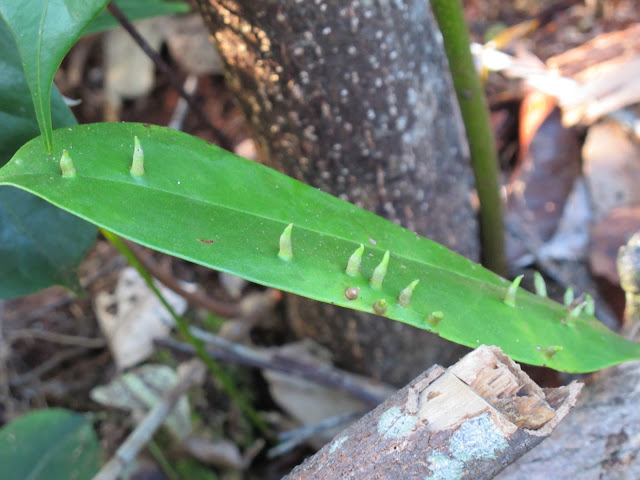The group (genus) of plants I'm studying for my PhD is Utricularia, commonly called "bladderworts". Bladderworts are carnivorous plants that grow in a wide range of environments; they can be terrestrial, aquatic or epiphytic.
Bladderworts capture prey with tiny, tiny suction traps that range between 0.2 and 2.0 mm long. The traps work by using a negative pressure gradient. Imagine a squishy balloon with a small door, surrounded by water. When the balloon is empty the water pressure on the outside makes it flat. When the door is triggered the water rushes inside the balloon making it swell up.
A small animal that triggers the trap gets swept inside with the water and suffocates to death. This happens very, very fast, It takes about 0.0007 seconds for door to open, too quick for the brain of the animal to tell (the rest of) its body to move out of the way.
Below are some pictures of a an aquatic species indigenous (though not endemic) to New Zealand, U. australis. They look kind of boring until you get them under a microscope, and I haven't managed to photograph them very well yet, but here a a few attempts.
This first pic shows the growing tip with a few immature traps plus some older mature ones. The trap circled in blue is side on (lateral view); the trap circled in purple is seen from almost above (dorsal view). In the bottom right corner is a dead fly of some sort.
Zooming in on the trap in lateral view you can see antennae and bristles poking out from around the door. These might help attract prey by giving them something to graze on that leads down to the trap door.. They definitely accumulate algae and little commensal creatures like sessile rotifers. You can also see something trapped inside the bladder that might be captured prey.
 |
| Side view of trap |
Here is a close-up of two traps as seen from underneath (ventral view). On one of them the door area is marked with a blue dot. Their bristles are obvious and have the filthy beard look going on.
 |
| Underside of two traps |
Lastly
, here is a commensual creature in action - probably a sessile rotifer. They are hard to make out in the video, so here is a photo (from
here) of a similar animal to give you an idea of what they actually look like. They attach to a substrate (like an bladderwort leaf or trap) and filter feed.
 |
| Sessile rotifer |
All the action takes place in the top part of the video-window. That's the wing of the dead fly you can see below. The resolution is too poor to see much full-screen. I'll try for some better video in a later post.
Reference:
Juniper, B. E., R. J. Robins, et al. (1989). The carnivorous plants,
Academic Press.















